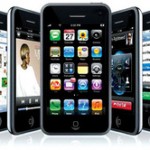 Mobile devices that connect to the Internet are hot. In fact, Morgan Stanley (NYSE: MS) predicts that within five years, more people will connect to the Internet using mobile devices than with desktop computers. The opportunities in mobile are huge. So, prepaid debit card companies, what is your mobile payment strategy?
Mobile devices that connect to the Internet are hot. In fact, Morgan Stanley (NYSE: MS) predicts that within five years, more people will connect to the Internet using mobile devices than with desktop computers. The opportunities in mobile are huge. So, prepaid debit card companies, what is your mobile payment strategy?
Morgan Stanley published their Mobile Internet Report in December 2009. The report is similar to their famous Internet Report, and contains some fascinating information. For example, the Report predicts monstrous growth in mobile, predicting that
The mobile Internet is ramping faster than desktop Internet did, and we believe more users may connect to the Internet via mobile devices than desktop PCs within 5 years.
Morgan Stanley also predicts that the “bubble” associated with mobile Internet could exceed that of the Internet bubble, stating:
Material wealth creation / destruction should surpass earlier computing cycles. The mobile Internet cycle, the 5th cycle in 50 years, is just starting. Winners in each cycle often create more market capitalization than in the last. New winners emerge, some incumbents survive or thrive while many past winners falter.
So what does this mean for prepaid debit card companies?
Huge opportunities.
Remember the early Internet days when Visa, MasterCard, and others fumbled around for payment solutions that could be easily used on the Internet? Some of the big winners of those early days of payment innovation are thriving today, including PayPal, Amazon.com, and the card associations.
Some of those Internet payment innovations will succeed and thrive in the new mobile Internet economy. New payment solutions, such as the iTunes store (with stored account information) will also thrive.
But huge opportunities and issues remain. For example, while a large percentage of the global population will have (and use) mobile devices to connect to the Internet, not all of those people have bank accounts or credit cards (in fact, a large percentage will not). Those people cannot participate in mobile commerce without a simple and secure payment solution.
In their Mobile Internet Report, Morgan Stanley notes that
Consumers who want to pay for content are more likely to do so via a simple payment system requiring many fewer keystrokes than credit card entry on the fixed internet. eBay’s PayPal could be particularly suited to the mobile internet. In the developing world, where credit cards and bank accounts are less prevalent, operators have an opportunity to leverage the prepaid account balances that already form the core of the money transfer market (e.g. Vodafone’s MPESA in Kenya).
As prepaid products become more widely accepted and available, prepaid providers have an opportunity to leverage that relationship and become the primary payment provider for a large portion of consumers. That relationship needs to include the ability for consumers to easily make (and receive) payments on their mobile devices.
And the opportunity isn’t years away – it’s here right now. There are currently 54 Million world wide users of Apple’s iPhone and iTouch devices who use their mobile devices to surf the web (and to make Internet purchases).
Other prepaid card companies are already working in this space. OboPay has a money transfer system using prepaid cards, and launched the OboPay iPhone app. Starbucks makes it easy for you to use your prepaid Starbucks card on your iPhone.
So, what’s your Mobile payment strategy?
Comments are closed